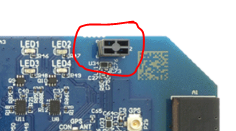Recently I've been doing GPS field test using DK v0.9.0. I'm using chip antenna on the board and SUPL data.
modem fw v1.2.0
ncs v1.3.0
The result is
- Quickly fix a position at a park in the open sky
- Can't fix a position on a bus. I put the DK near a window
- Can't fix a position on a car. I put the DK on a back sheet
- Can't fix even in traffic circle at station square. It's surrounded by two or three-story buildings and they aren't so high.
Is this common result? I expected smartphone-level GPS fixing ability. I know nRF9160 supports only GPS, while smartphone has more. I guess this makes the difference, but want to know Nordic engineer's field test experience. I'm also wondering if there are some bugs in code. Thank you.




